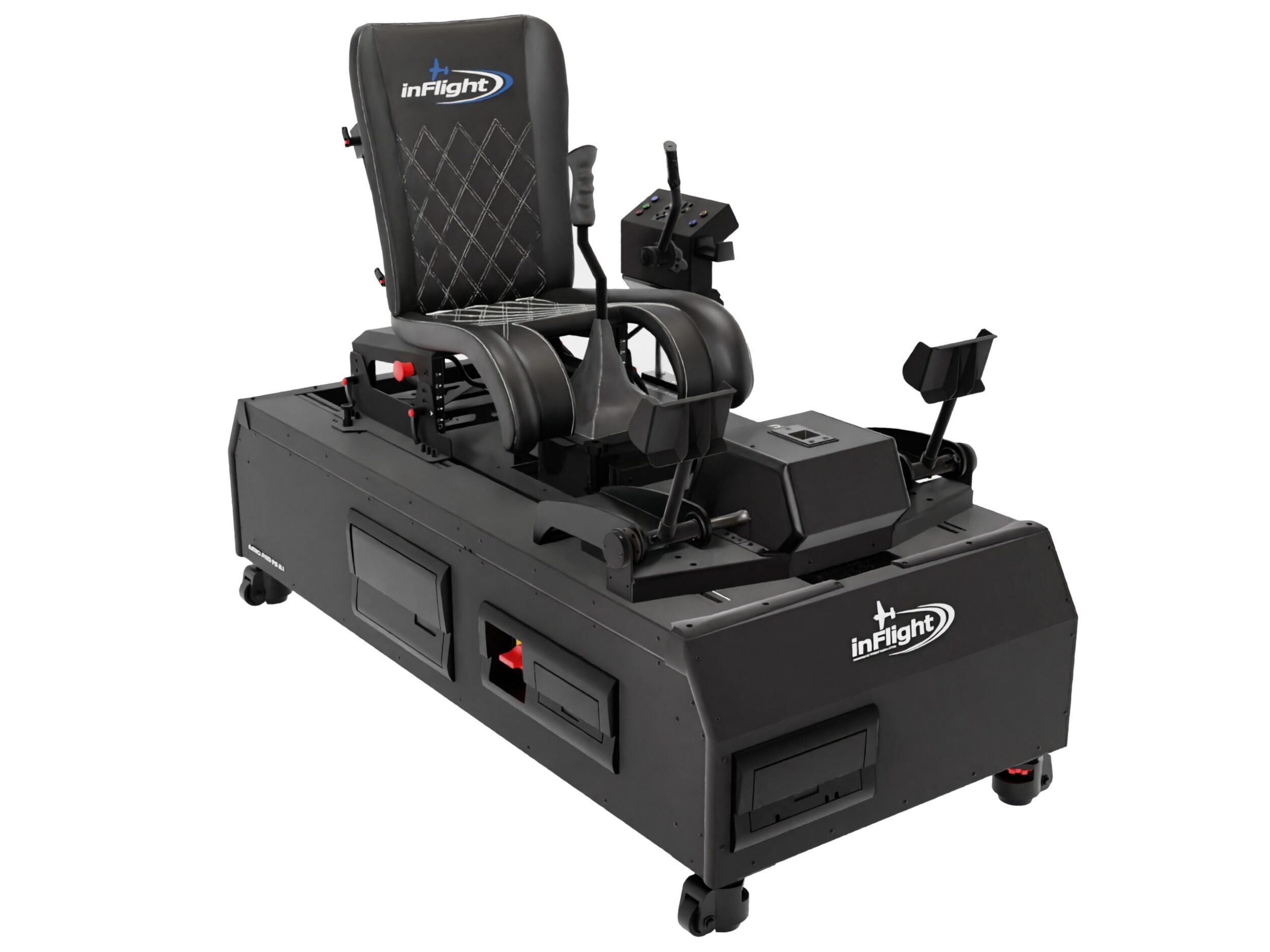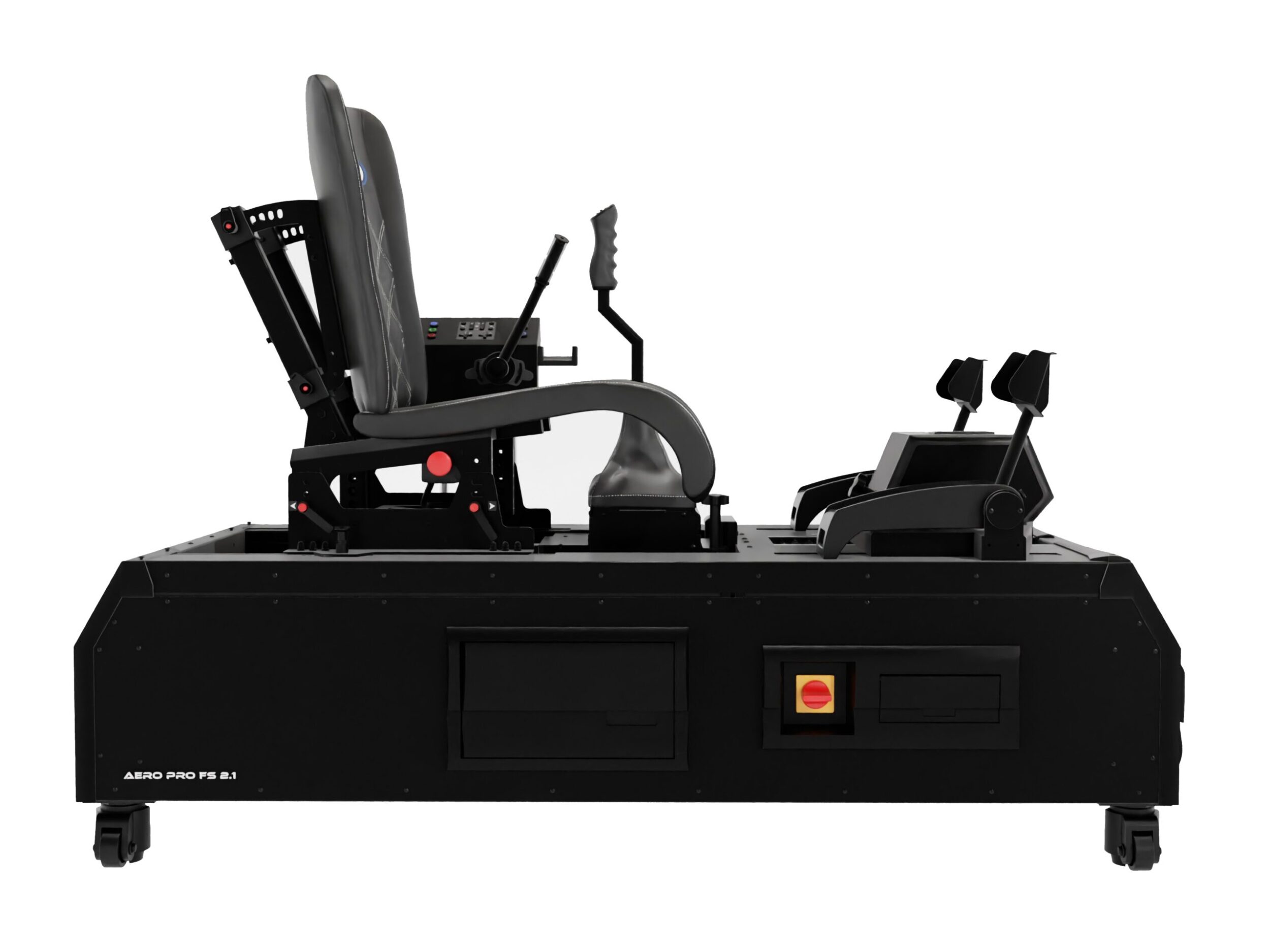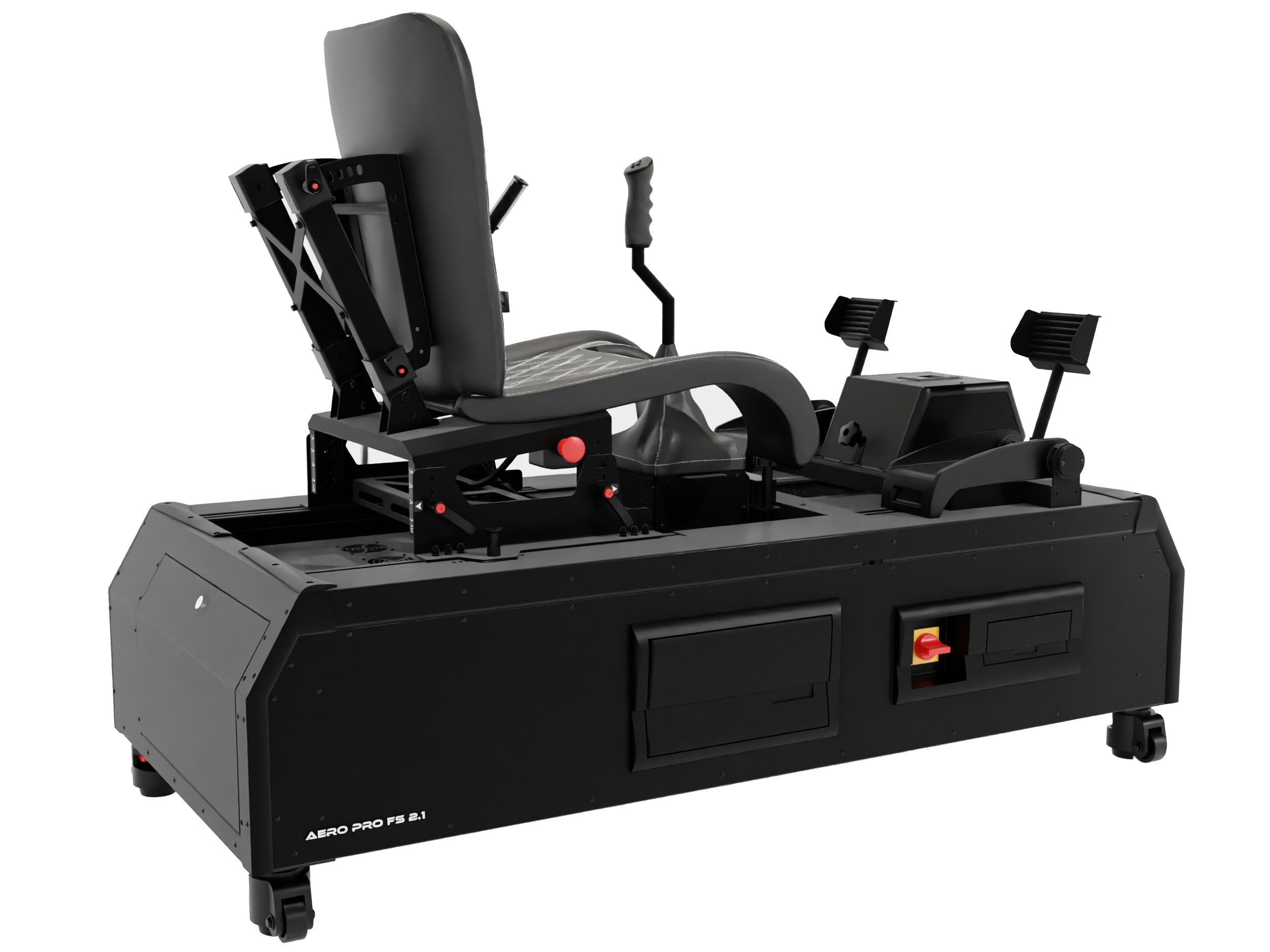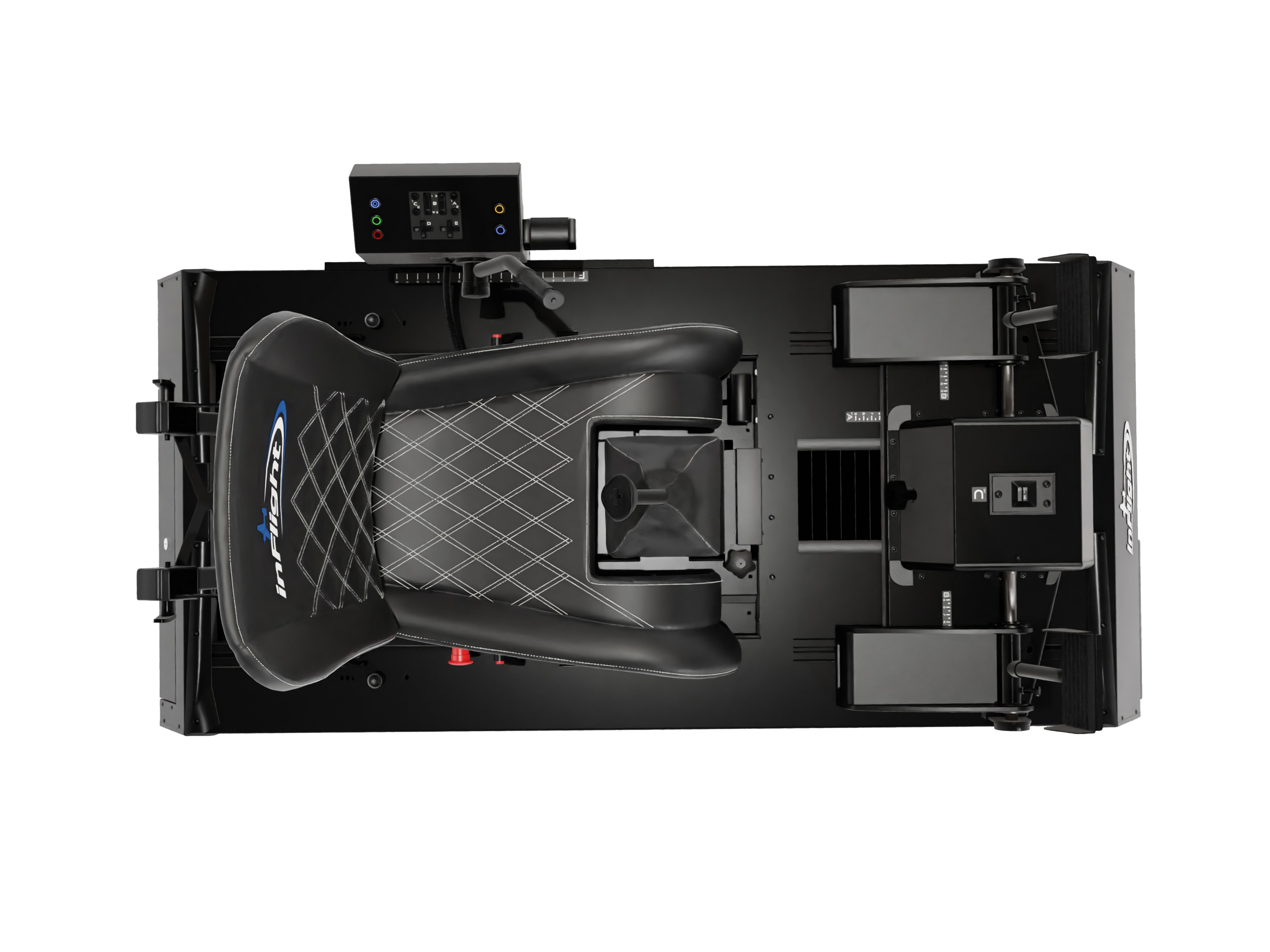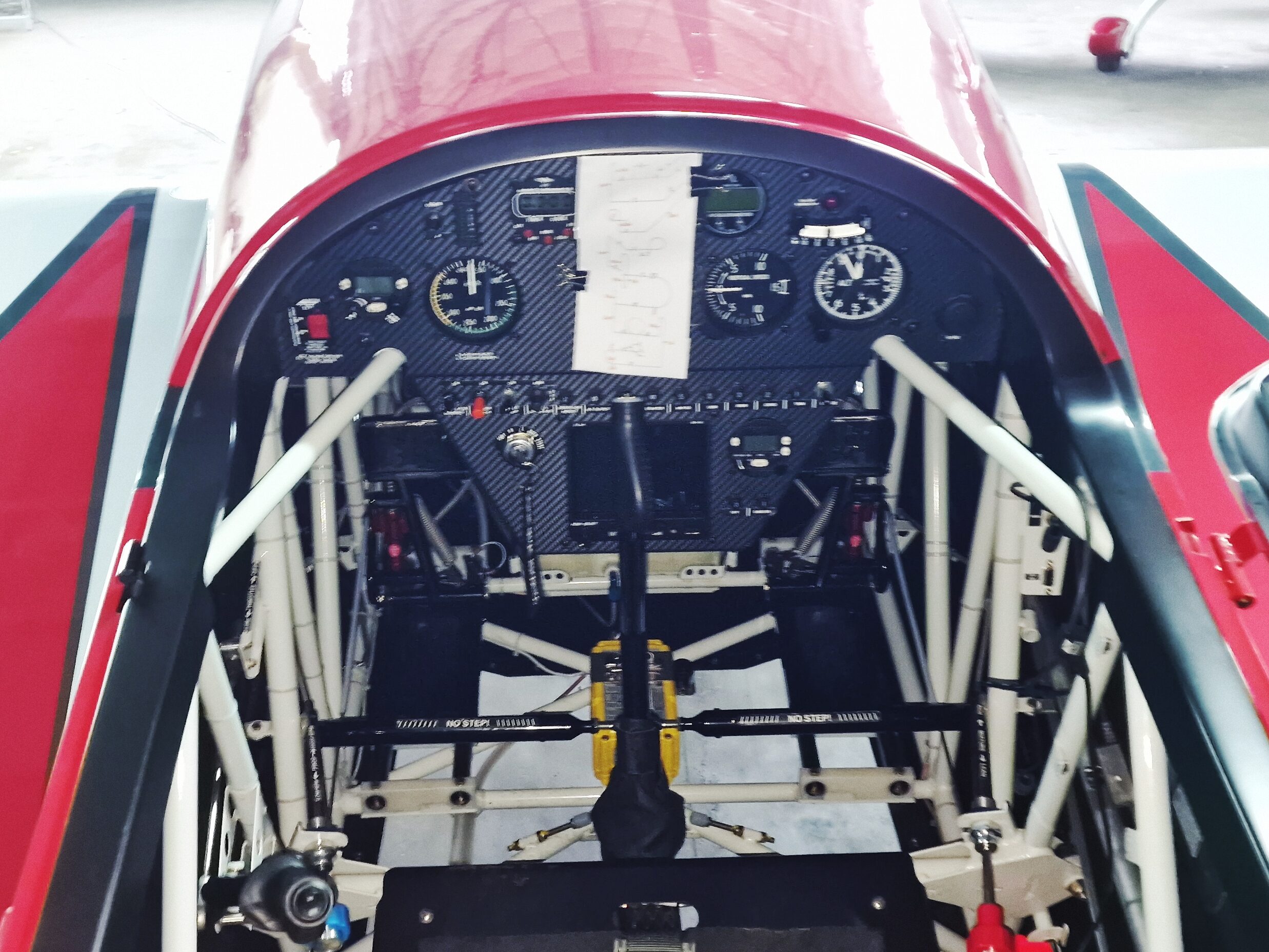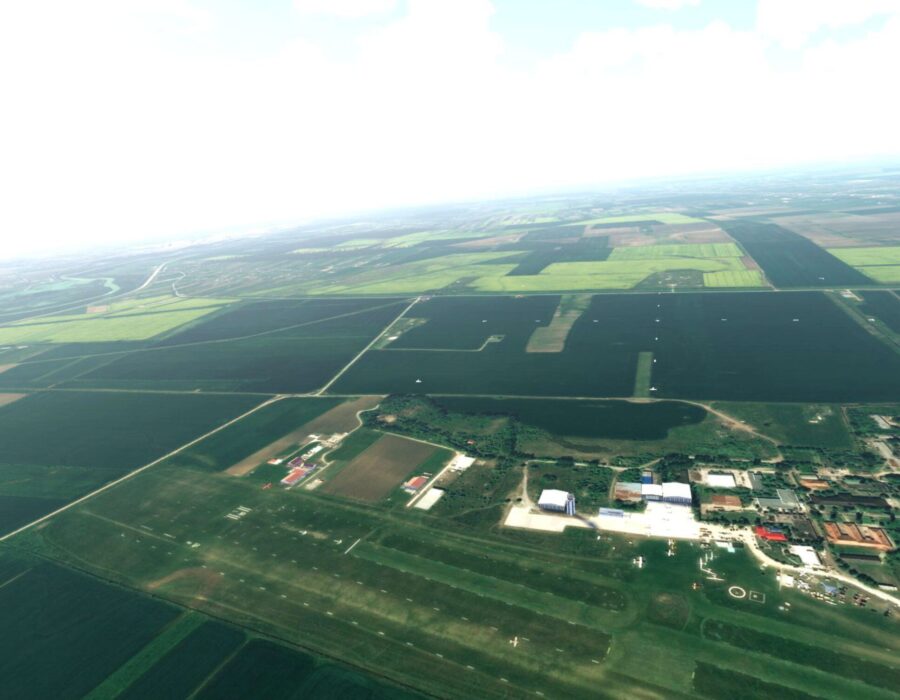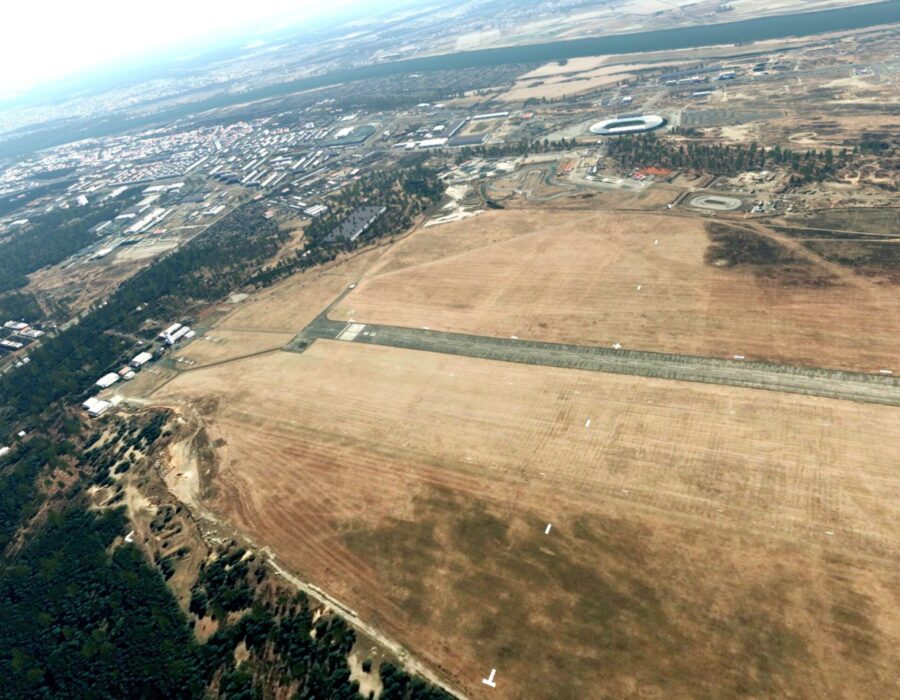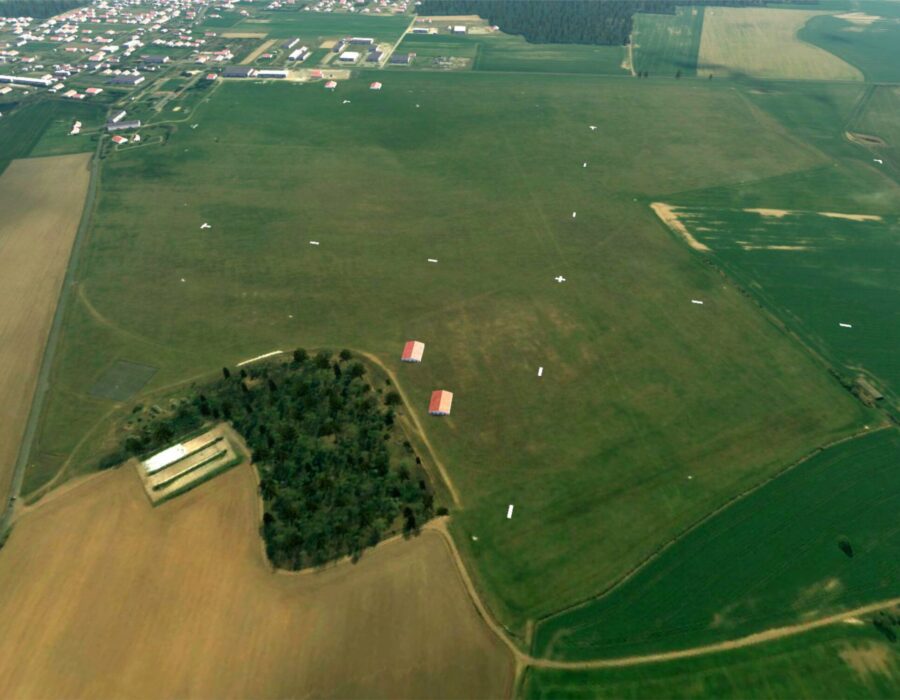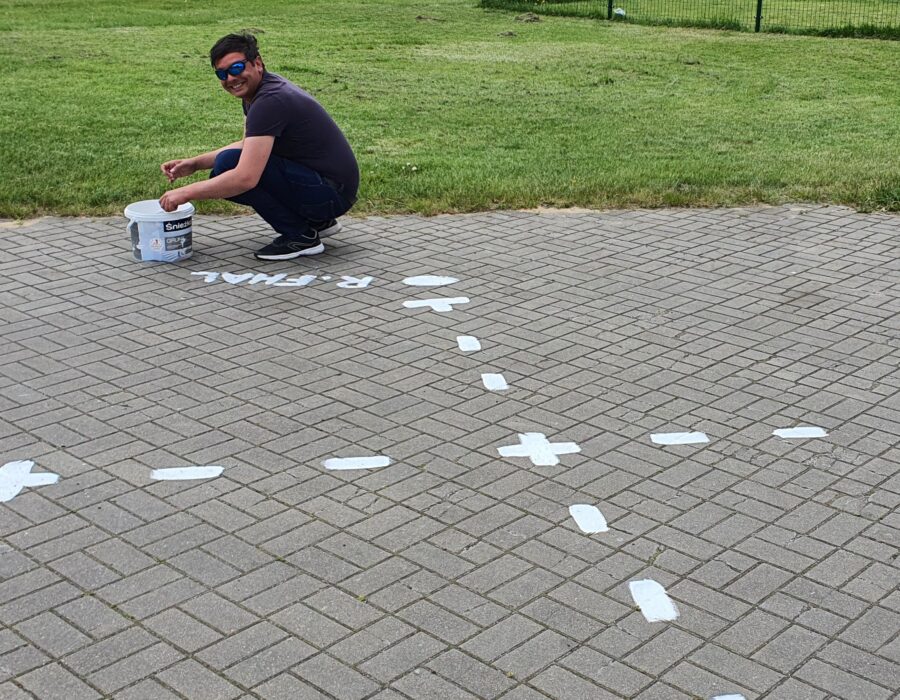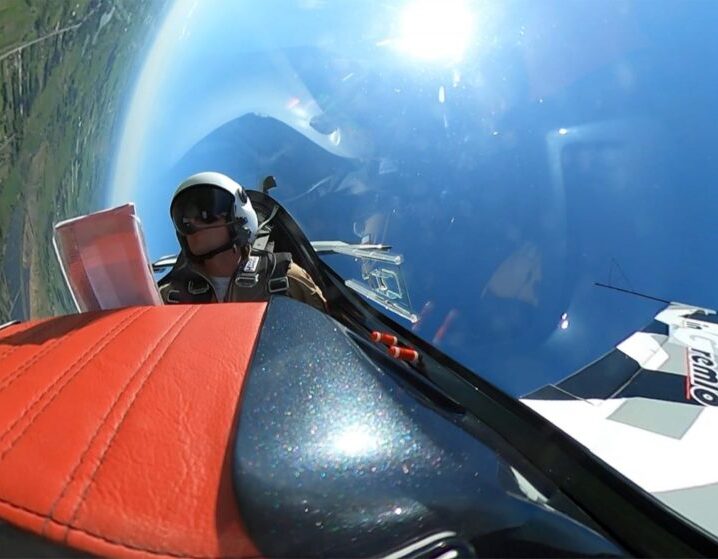INFLIGHT AEROBATIC PROFESSIONAL FS 2.2
Ready for intense and brutal aerobatic piloting
Variety of sceneries of the most popular aerobatic airfields in the world
Adjustable platform that covers pilot position geometry from all types of aerobatic aircraft
All components are built to industrial standards using industrial-grade materials
High-end, 360° outstanding visualisation
Top-tier computer hardware
Adjustable platform that covers the pilot-position geometry of all types of aerobatic aircraft
The simulator can be used by pilots who own or fly various types of aerobatic aircraft. The wide range of adjustments ensures that all aerobatic pilots will find the seating in the simulator to feel exactly like the planes they are accustomed to flying.
The platform is equipped with adjustable features including adjustment of: the distance between the rudder pedals and the control stick, the angle of inclination of the rudder pedals, the width of the spacing of the rudder pedals, throttle lever slide resistance, throttle lever position, the control stick position.
Adjustment of seat height position
Seat-to-control stick distance adjustment
Seat backrest adjustment
Adjustment of the distance between the rudder pedals and the control stick
Adjustment of the angle of inclination of the rudder pedals
Adjustment of the width of the spacing of the rudder pedals
Throttle lever slide resistance adjustment
Throttle lever position adjustment
Height adjustment of the control stick position
Realistic force feedback system (PATENTED) with adjustable linear and non-linear characteristics on all controllers
We design and manufacture both the controller-management computer and its accompanying software, which we have patented. This setup enables pilots to easily adjust the force-feedback characteristics of ailerons, elevator, and rudder to match those of their real aircraft. Our software allows for the precise setting of force, capable of varying it depending on the aircraft’s speed. All custom settings can be stored in the internal memory
For some aircraft, like the Extra 200, Extra 300L, and Extra 330 LC, the stick forces on ailerons are linear, increasing steadily with stick deflection. In contrast, modern aircraft like the Extra LX, Extra SC, Extra NG, Sbach, GenPro, and GB1 models feature non-linear force characteristics for more efficient hesitation stops: the force increases sharply at the beginning of deflection and then decreases after a certain point. Additionally, the forces on controllers vary with speed, increasing at higher speeds and decreasing at lower speeds. Our software supports the configuration of individual force characteristics for each user, which can be memorized and stored. This flexibility means the simulator can replicate the controller-force characteristics of any aerobatic aircraft at the push of a button.
Elevator linear force is adjusted in correspondence with the deflection of the controller
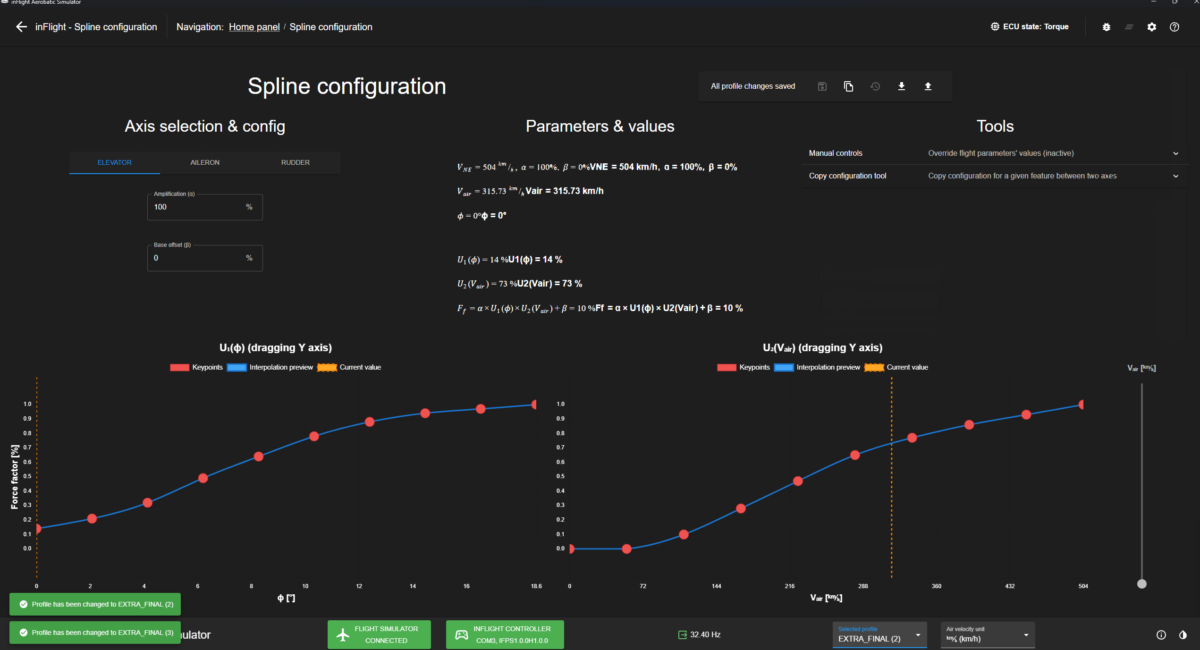
Elevator non-inear force is adjusted in correspondence with the deflection of the controller
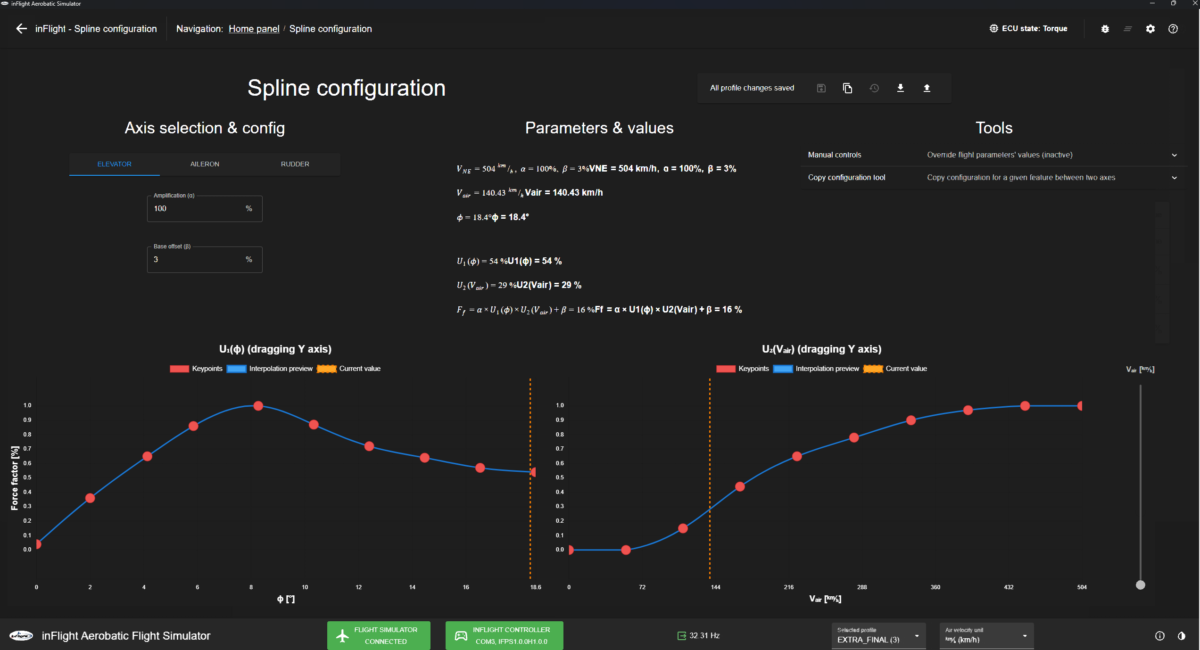
All made to industrial standards out of industrial-grade components and materials
Parts used in AERO PRO simulators are industrial-grade equipment renowned for its superior quality and durability. This deliberate selection of high-quality, industrial-class components ensures optimal performance, reliability, and longevity of our simulators.

Ready for intense and dynamic aerobatic piloting
All the mechanisms of the controllers – including the stick, rudder, and throttle – are designed and produced in-house. They are manufactured using industrial-grade components and state-of-the-art 3D printing technology, similar to what is used in the aerospace industry. Equipped with industrial servomotors and servo drives, our aim is to ensure they last for years.
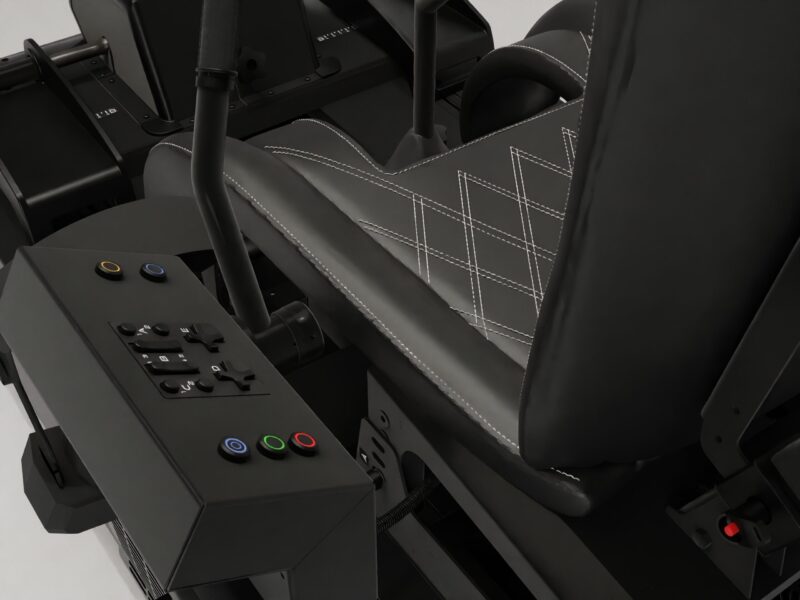
Super realistic aerobatic virtual aircraft
The simulator utilizes AEROFLY FS 4 FLIGHT SIMULATOR software from IPACS for flight simulation. We have developed our virtual aircraft models from scratch for this software. Currently, we offer virtual aircraft that simulate the aerobatic aircraft EXTRA 330LC, EXTRA 330LX, Extra 330SC and EXTRA NG. During the refinement of these virtual aircraft, we engaged an Unlimited-class aerobatic pilot, Romain Fhal, who assisted us in ensuring that the behavior of the virtual aircraft in flight closely resembled the originals. Our virtual aircraft allow for displaying speed and altitude in both kilometers per hour and meters, as well as knots and feet.
The simulator is also compatible with other flight simulation programs such as Microsoft Flight Simulator.

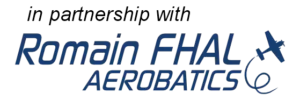
Aerobatic training with Sequence Display
The virtual aircraft developed by us have been equipped with a software that allows the uploading of aerobatic sequences from jpeg and pdf files and displaying them in the aircraft cockpits, just as it happens in real aircraft. The software allows for resizing the displayed sequence.
Thanks to this feature, the simulator enables competitive flight training, during which the pilot practices reading maneuvers from a page while performing aerobatics. This skill allows for real-time verification of the memorized sequence, reducing the likelihood of errors.
Sceneries from the most popular aerobatic airfields, each one containing the aerobatic box of that field
The preparation of the field before championships is crucial. With our system, you no longer need to worry about organizing training slots or conducting numerous training flights at the competition location.
Simply select your desired airfield, complete with the aerobatic box, and fly there at any time of day. You can choose different sun positions, wind directions, and wind speeds, all according to your preferences. Be prepared to be the best.
We will continue our work on developing scenery for additional airfields containing aerobatic box markers.
Inflight simulators are based on 360° VR visualization
As aerobatic pilots, we understand the critical importance of having a comprehensive 360° field of vision and the ability to train where to look during aerobatic maneuvers. Our VR headsets are high-end models, widely used in military simulators and the business sector, and have been upgraded by PIMAX to meet our specific requirements. The process is straightforward: simply put on the headset, and you will see exactly what you would in a real aircraft. The specifications of our VR headsets include: ultra-sharp resolution, glass aspheric premium lenses with a large sweet spot, tracking with internal cameras, high-fidelity audio DMAS earphones.
Advanced Cooling System for Enhanced Simulator Performance
The computer, along with servo drives and other electronic components, is located inside the simulator platform, and thanks to the implemented sliding mechanism, it is easily accessible. The space containing the electronics is cooled by air filtered from dust.
Enhanced control and viewing experience with touchscreen monitor and keyboard
The touchscreen monitor and keyboard are used to operate the main computer, adjust flight parameters, and forces on the flight controllers. They are mounted on a separate stand that can be positioned directly next to the simulator or serve as a separate workstation. The monitor can be used for flight viewing by accompanying individuals.
Please have a look how does it perform…
Aerobatic flight performed on INFLIGHT AERO PRO FS 2.2 by Advanced aerobatic pilot
INFLIGHT AERO PRO FS 2.2 configuration
| Simulator platform | INFLIGHT AERO PRO 2.2, static platform |
|---|---|
| Force feedback system | INFLIGHT - Patented |
| Force feedback and controllers computer | INFLIGHT Aquilo 2.2 |
| Stick controller mechanism | INFLIGHT ST PRO 2.2 EST |
| Rudder pedals mechanism | INFLIGHT RP PRO 2.2 EST |
| Servo motors | 3 industrial with Motion Coordinators (high-speed, high-precision, high performance), Motion-iX core technology |
| Servo drives | 3 industrial with Motion Coordinators (high-speed, high-precision, high performance), Motion-iX core technology |
| Frame | Anodized structural aluminum |
| Casing | Powder-coated steel |
| Seat geometry adjustments | The distance between the rudder pedals and the control stick, the angle of inclination of the rudder pedals, the width of the spacing of the rudder pedals, throttle lever slide resistance, throttle lever position, the control stick position - all adjustments include scales for precise setting |
| Computer and electronic cabinet | Filtered air ventilated |
| Safety switch | Integrated |
| Control panel | 16 programmable switches |
| Stick handle | Aerobatic aircraft grip, 4 programmable switches |
| Throttle handle | Aerobatic aircraft grip, 1 programmable switch |
| Seat, stick, handle finish | Natural leather Black NAPPA (Bentley distribution type), grey diamond stitching |
| External USB | 3 ports |
| Floor elements | 4 lifting rollers |
| Flight simulation computer hardware | Inflight custom |
|---|---|
| Mainboard | MSI MAG Z790 TOMAHAWK WIFI |
| CPU | Intel Core i5-14600KF |
| GPU | MSI GeForce RTX 4080 SUPER 3X OC 16 GB GDDRX |
| SSD Drive | SSD M.2 Samsung 990 PRO 1 TB |
| RAM | 32GB 6000MHz |
| Operating system | Microsoft Windows 11 Pro |
| Power supply | 850W 80 Plus Titanium ATX 3.0 |
| Auxiliary computer equipment | |
|---|---|
| Monitor | iiyama ProLite T2252MSC-B2 22'' FULL HD LED IPS, touchscreen |
| Computer keyboard | Logitech K400 Plus with integrated touchpad |
| Virtual reality headset | Pimax Crystal Light - Industrial Version |
|---|---|
| VR headset | Ultra-sharp 2880 x 2880 resolution per eye, glass aspheric lenses with a large sweet spot, 35 PPD for super clear vision, variable refresh rate (72Hz, 90Hz, 120Hz), adjustable IPD (58-72mm), local dimming delivers vibrant, true-to-life colors, tracking with internal cameras |
| Sound | DMAS Cristal Sound Advanced Speakers |
| Software licences | |
|---|---|
| Force feedback adjustment | INFLIGHT Force Feedback Master 2.2 |
| INFLIGHT E330LC virtual aircraft | Based on aerobatic aircraft Extra 330 LC |
| INFLIGHT E330LX virtual aircraft | Based on aerobatic aircraft Extra 330 LX |
| INFLIGHT E330SC virtual aircraft | Based on aerobatic aircraft Extra 330 SC |
| INFLIGHT NG virtual aircraft | Based on aerobatic aircraft Extra NG |
| Sequence display software | INFLIGHT Sequence Master 2.2 |
| European safety standards | CE Certificate |
| Total weight | 250 kg |
